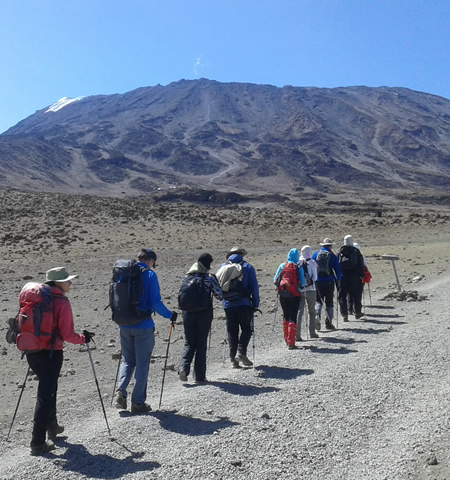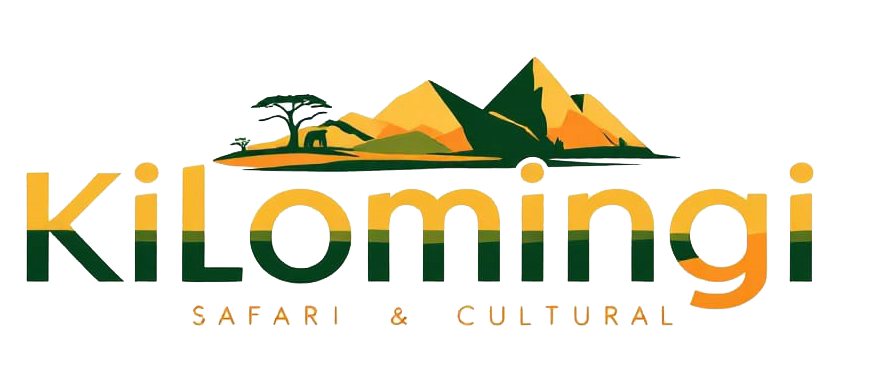A Complete Guide to Africa’s Highest Peak
Mount Kilimanjaro, standing at 5,895 m (19,341 ft), is the highest mountain in Africa and the tallest freestanding mountain in the world. Crowned with a permanent snow-cap, this dormant volcano lies within Kilimanjaro National Park, covering 1,668 sq km (641 sq miles). Its three volcanic cones (Kibo, Mawenzi, and Shira) form one of the planet’s most iconic natural wonders.
At Kilimanjaro’s summit, Uhuru Peak (Swahili for freedom), climbers are rewarded with breath taking panoramic views and the achievement of conquering one of the Seven Summits. With its unique landscapes, rich biodiversity, and challenging yet rewarding trails, Kilimanjaro offers one of the most memorable trekking adventures in the world.
.
Choosing the Right Kilimanjaro Route
Selecting the best trekking route is key to your summit success and overall experience. Routes vary in:
- Scenery & wilderness experience
- Length, distance & trekking cost
- Summit success rates & acclimatization opportunities
- Crowd levels and difficulty
From the popular Machame and Marangu routes to quieter trails like Lemosho, Rongai, or the challenging Umbwe route, each option offers unique advantages. Whether you seek stunning scenery, high summit success, or fewer crowds, there’s a Kilimanjaro route tailored to your adventure.
Below follows a brief summarised comparison of all the main Kilimanjaro routes.
.
The Marangu Route – “Coca-Cola Route”
Duration: 5-6 days
Accommodation: Mountain huts (dormitory style)
Difficulty: Moderate
Success Rate: Low for 5 day trek, higher with 6 day trek
Best For: Budget Travel, those preferring hut accommodation
The Marangu Route is the oldest and most established path up Kilimanjaro. Known as the “Coca-Cola route” for its popularity, it is the only trail offering hut accommodations instead of camping. While it is considered easier because of its gradual slope, its short 5-day itinerary often leads to poor acclimatization and low summit success. Extending the climb to 6 days is strongly recommended.
+ Pros: Cheapest Route, Huts with Mattresses, Steady Trail
– Cons: Crowded, Lower Success Rate, Same Trail for Ascent & Descent
.
The Machame Route – “Whiskey Route”
Duration: 6-7 days
Accommodation: Camping
Difficulty: Challenging but rewarding
Success Rate: High
Best For: Adventurers seeking scenery & acclimatization advantage
The Machame Route is the most popular and scenic Kilimanjaro trail. Known as the “Whiskey route,” it offers dramatic landscapes, including the Shira Plateau, Lava Tower, and Barranco Wall. Its topography allows climbers to “climb high, sleep low,” aiding acclimatization and improving summit success.
+ Pros: High Success Rate, Stunning Scenery
– Cons: Can be Crowded, Physically Demanding Sections
.
The Umbwe Route – Short & Steep
Duration: 5-6 days
Accommodation: Camping
Difficulty: Very tough, steepest route
Success Rate: Low
Best For: Experienced hikers seeking a challenge
The Umbwe Route is the steepest and most direct path up Kilimanjaro. It is less travelled and offers solitude, but its rapid ascent means poor acclimatization and low success rates. It joins the Machame route after the first two days. Only recommended for highly experienced climbers.
+ Pros: Quiet, Dramatic Landscapes
– Cons: Very Steep, Poor Acclimatization, Low Summit Success
.
The Shira Route – Scenic but High Start
Duration: 6-7 days
Accommodation: Camping
Difficulty: Moderate to difficult
Success Rate: High if acclimatized
Best For: Hikers already acclimatized to altitude
The Shira Route approaches Kilimanjaro from the west, crossing the stunning Shira Plateau. A 4×4 transfer brings climbers to 3,500m+, making acclimatization challenging at the start. Often merges with the Lemosho or Machame route after day 2.
+ Pros: Beautiful Plateau, Less Crowded
– Cons: High Starting Altitude, Acclimatization Risks
.
The Lemosho Route – Best All-Round Choice
Duration: 7-8 days
Accommodation: Camping
Difficulty: Moderate
Success Rate: Very high
Best For: Hikers wanting balance of beauty & success
The Lemosho Route is one of the most beautiful and remote trails. It begins in the western rainforest and crosses the Shira Plateau before joining the Machame route. Its longer itinerary allows for excellent acclimatization and high summit success.
+ Pros: High Success Rate, Stunning Scenery, Quieter Start
– Cons: Longer & More Expensive, Tough Access in Rainy Season
.
The Rongai Route (Naro Moru) – Quiet Northern Approach
Duration: 6-7 days
Accommodation: Camping
Difficulty: Moderate
Success Rate: Good
Best For: Hikers wanting fewer crowds & a drier trail
The Rongai Route ascends from Kilimanjaro’s northern side near the Kenya border. It is one of the quietest trails with steady, gradual climbs, making it suitable for beginners. Descends via the Marangu Route.
+ Pros: Fewer Crowds, Drier Weather
– Cons: Less Scenic than Western Routes, Longer Drive to Start Point
.
The Mweka Route – Descent Only
Accommodation: Camping
The Mweka Route is the designated descent trail for Machame, Lemosho, and Shira climbers.
.
The Northern Circuit – Longest & Most Scenic
Duration: 9-10 days
Accommodation: Camping
Difficulty: Moderate, excellent acclimatization
Success Rate: Highest of all routes
Best For: Hikers seeking the ultimate Kilimanjaro experience
The Northern Circuit is the newest and longest Kilimanjaro route, circling around the remote northern slopes before summiting via the eastern approach. With its extended itinerary, it offers the highest summit success rates and least crowds.
+ Pros: Best Acclimatization, Stunning 360° Views, Very Quiet
– Cons: Longest & Most Expensive Option
.
How to Choose the Best Kilimanjaro Route
When selecting a route, please consider:
- Experience Level: Are you a first time hiker or seasoned climber?
- Fitness: Some routes are steep and demanding
- Time Available: Longer routes can improve acclimatization
- Budget: Shorter routes are cheaper but reduce success chances
- Preference: Crowds vs. solitude, scenery vs. convenience
